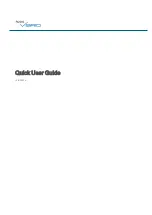
When a Phoenix node is initially configured (or if Load Defaults is selected from the Node
Menu), every input channel is mapped to the output channel of the same number (e.g.
input channel 1 is mapped to output channel 1, etc) on both fiber ports (for SHR) or just
fiber port A (for Linear).
IMPORTANT:
In Linear mode, mappings on fiber ports A and B are independent. For
example, you could map input channel 1 to output channel 7 on fiber port A, but then
map input channel 1 to output channel 12 on fiber port B. This allows you to have a total
of 32 channels enabled in a system simultaneously; 16 in one direction and 16 in the
other. However, in Self-Healing Ring mode, mappings on fiber ports A and B are identical.
For example, if you map input channel 1 to output channel 7 on fiber port A, then the
same mapping is made to output channel 7 over fiber B. Therefore, the maximum
number of enabled channels in a Self-Healing Ring is 16. Channel mapping behaves
the same way for Data and Audio channels.
Main -> Local -> Video -> Output Mapping:
This screen allows you to select which optic port is being reviewed for each of the
16 video output channels. The number under the monitor icon indicates which output
channel is selected. The letters under the camera icons indicate at which optic port the
selected output channel will be looking. Arrows to the left and right of the monitor icon
indicate that the mapping is enabled. If the output channel is not mapped to a fiber
then the corresponding arrow is not shown. The status of the output video signal is
depicted on the screen of the monitor icon. All channel mapping are saved when
you leave this menu.
• Blank: If there is no output mapping (i.e. neither fiber is selected)
then a blank monitor icon is shown.
• Two-Bar: If the output is mapped but video is not detected on any of the
selected fibers then two bars are shown in the monitor.
Video:
Exit
A
B
A
B
1
Video:
Exit
A
B
1
1
1
Video:
Exit
A
B
A
B
1
Video:
Exit
A
B
A
B
1
32














































